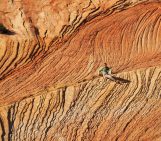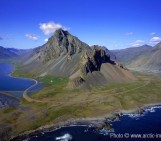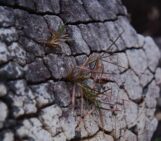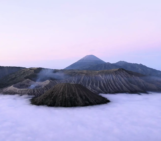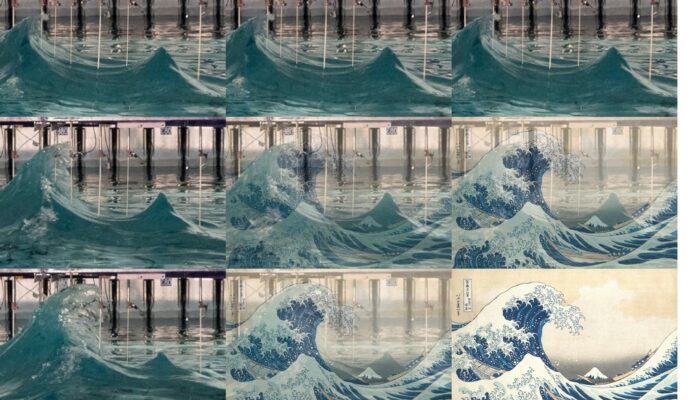
Featured in this blog post is a collection of images that gives a picture-perfect example of life imitating art.
The photos in the left column are three consecutive still frames of a breaking wave that scientists generated in a lab environment at the University of Edinburgh in the UK. The pictures in the centre and right columns show the same wave images, but now superimposed with the famous 19th century Japanese woodblock print, The Great Wave off Kanagawa.
While the images were produced on opposite sides of the Earth with a few hundreds of years between their creation, the curves and edges of the waves are very similarly positioned.
“Completely coincidentally, in a strange twist of fate, the wave we created bears striking resemblance to The Great Wave off Kanagawa, painted many years ago by the Japanese artist Katsushika Hokusai,” said Mark McAllister, a researcher at the University of Oxford in the UK. He is part of a team of scientists working to better understand the dynamics of freak waves – waves that are unexpectedly large in comparison to the waves that surround it.
The images also highlight the similarities between artists and scientists that often are overlooked: while art and science are different in many ways, both involve observing and trying to interpret their surroundings. The wave simulation photos and the woodblock print both visualise a common endeavor: recreating nature to better understand it.
Simulating monster waves
The photographs in the left column feature the recreation of a very particular wave that took form in 1995 in the North Sea, known as the Draupner freak wave. This particular surface wave was one of the first confirmed observations of a freak wave at sea. The Draupner Oil Platform had taken measurements of the event, reporting that the wave was 26 metres tall (more than twice as tall as the surrounding waves). Rogue waves as high as 30 metres had been reported by sailors and scientists for many years, but until the 20th century there was wide disbelief from the scientific community that such waves were more than myth.
“The measurement of the Draupner wave in 1995 was a seminal observation initiating many years of research into the physics of freak waves and shifting their standing from mere folklore to a credible real-world phenomenon,” said McAllister in a recent press release.
Such rogue waves are capable of causing heavy damage to large ships, and by recreating the Draupner freak wave, McAllister and his colleagues are trying to better understand how this marine phenomenon occurs.
Experiments were carried out in the FloWave Ocean Energy Research facility at the University of Edinburgh. The facility has a circular basin equipped with wavemakers around the entire circumference, allowing scientists to generate waves from any direction and recreate complex wave conditions.
The research team was able to simulate this wave on a smaller scale by crossing two different wave groups at a large angle. They found that when the two wave groups hit each other at 120 degrees, this allowed the freak wave to take shape.
Typically, wave breaking in the ocean limits the maximum height of waves. But when waves cross each other at large angles, wave breaking behaviour changes, removing typical height limitations.
Monster wave immortalised in print
The Great Wave off Kanagawa, one of Hokusai’s most famous prints, depicts three crewed boats at sea, seemingly seconds away from crashing into a monstrous wave, with Japan’s Mount Fugi sitting in the distance. The work is often interpreted to symbolize the eternity and formidable force of nature compared to the frailty of humans.
While the print is often considered to be an artistic representation of a tsunami, one study argues that the features and conditions are more similar to a freak wave event. By using the boats and the mountains as reference points, the researchers involved in the study estimate that the great wave is approximately 10-12 metres in height.
While many artists distort reality to enhance and highlight certain aspects of their work, the researchers point out that Hokusai’s work is likely to be representative of nature, noting that he strove for years to understand the structure of his surroundings and draw them accurately in his art. In the afterward of his 1834 collection of prints containing The Great Wave of Kanagawa, Hokusai writes:
“Since the age of six, I had a habit of sketching from life. From fifty onwards I began producing a fair amount of art work, but nothing I did before the age of seventy was worthy of attention. At seventy-three, I began to grasp the structures of birds and beasts, insects and fish, and of the way plants grow.
If only I go on trying, I will surely understand them still better by the time I am eighty, so that by ninety I will have penetrated to their essential nature. At one hundred, I hope I may have a divine understanding of them, while at one hundred and ten I may have reached the stage where every dot and every stroke I paint will be alive. May men of great age and virtue see that I am not hoping for too much!”
By Olivia Trani, EGU Communications Officer
Imaggeo is the EGU’s online open access geosciences image repository. All geoscientists (and others) can submit their photographs and videos to this repository and, since it is open access, these images can be used for free by scientists for their presentations or publications, by educators and the general public, and some images can even be used freely for commercial purposes. Photographers also retain full rights of use, as Imaggeo images are licensed and distributed by the EGU under a Creative Commons licence. Submit your photos at http://imaggeo.egu.eu/upload/.

